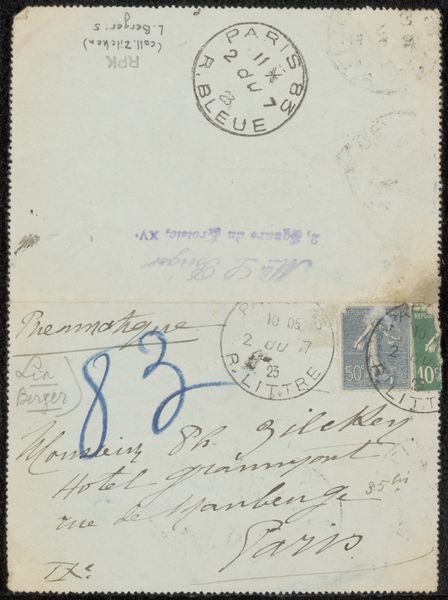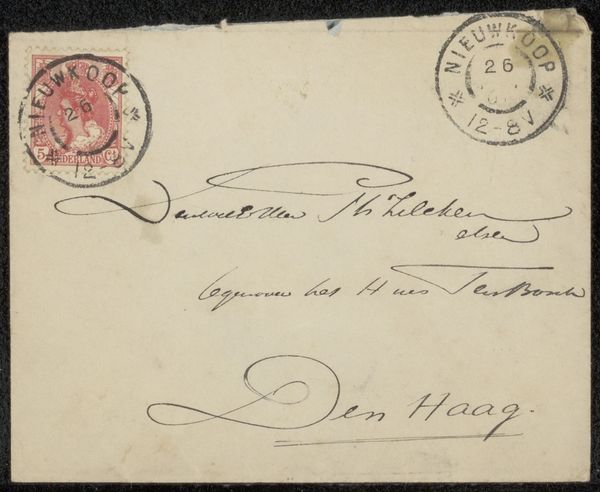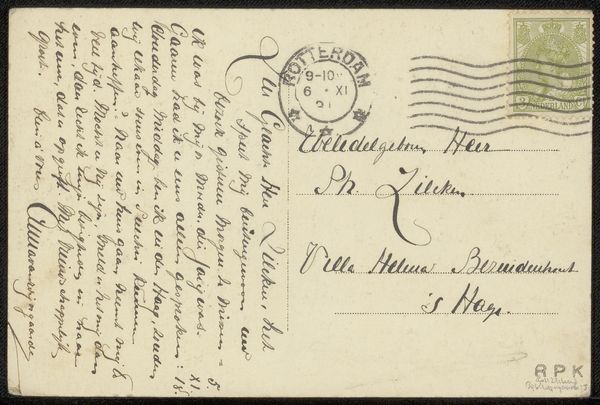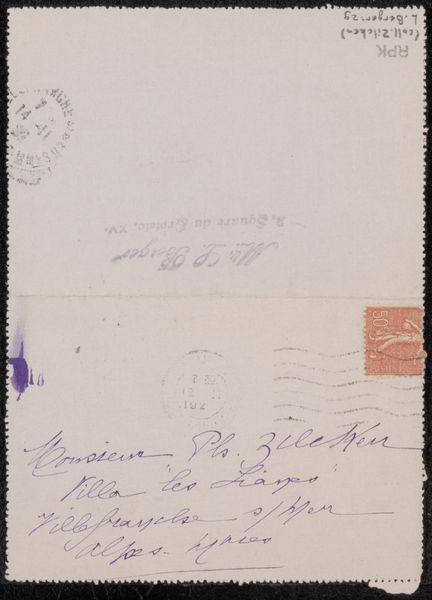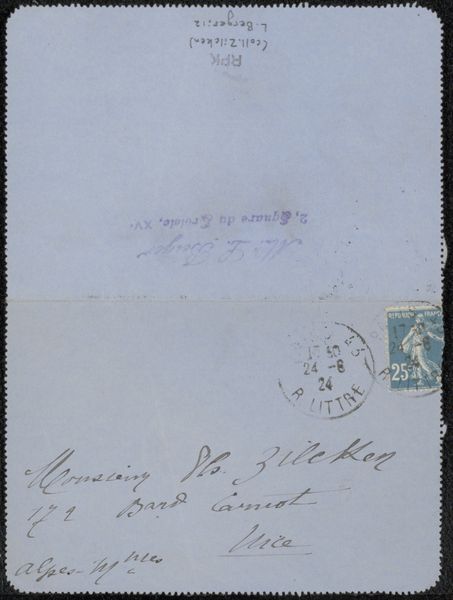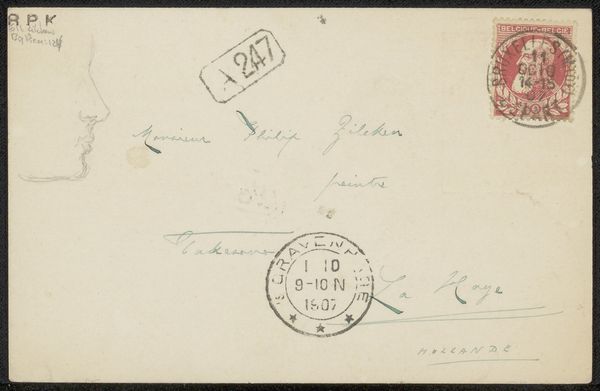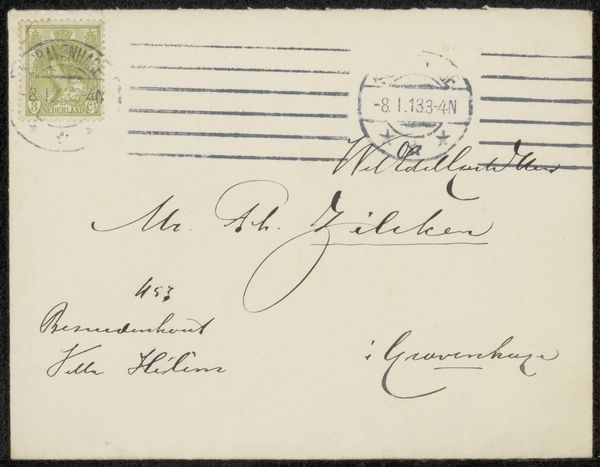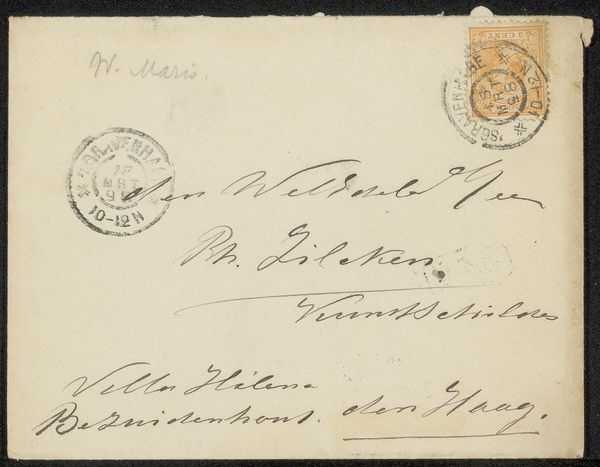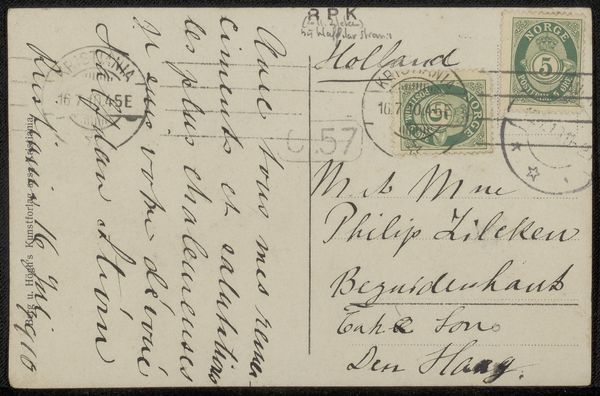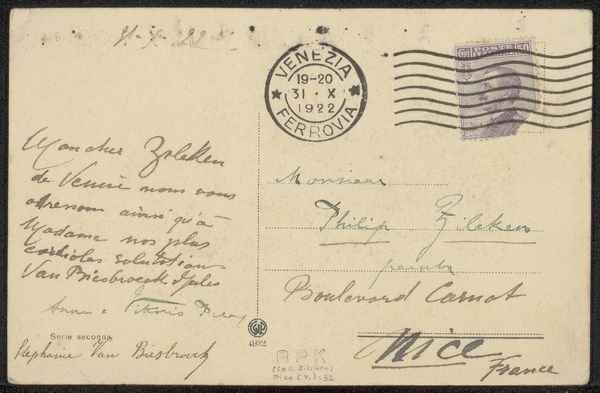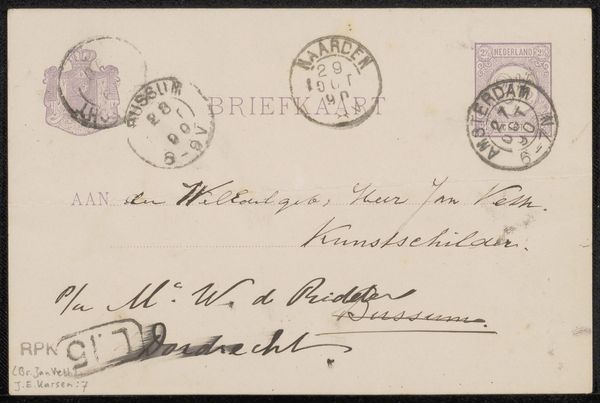
paper, ink
#
pen sketch
#
paper
#
personal sketchbook
#
ink
#
idea generation sketch
#
sketchwork
#
ink drawing experimentation
#
pen-ink sketch
#
ink colored
#
sketchbook drawing
#
storyboard and sketchbook work
#
sketchbook art
#
modernism
Copyright: Rijks Museum: Open Domain
Curator: This intriguing work is titled "Brief aan Philip Zilcken," believed to date back to 1929, and it's attributed to Lya Berger. You can see that the piece consists primarily of ink on paper. Editor: It’s fascinating, isn’t it? My immediate impression is one of intimacy, something fleeting and personal, the faded ink giving it an almost dreamlike quality. The composition seems driven by function more than deliberate aesthetics, but perhaps that’s the charm. Curator: Agreed. We must remember this wasn't necessarily conceived as "art" in the traditional sense, but a material object intended for postal transit, communication bound by social conventions and physical constraints like paper type, postal regulations and the technologies that handle the mail itself. Its very being hinged on exchange and function within a specific economic and cultural network. Editor: But even viewed formally, consider the balance, albeit unconventional. The address neatly juxtaposes the stamp, and the varying densities of ink create an interesting textural landscape, wouldn't you agree? I'm also curious about the handwriting and typeface of the stamp–they complement each other, despite originating from very different production methods. Curator: I’m particularly interested in Lya Berger's address marked on the reverse, contrasted with the Parisian postmark on the front; each signifies points of material transit. How might the exchange have shaped the artist's perspective? What role did institutions and infrastructure of the postal service play? These questions invite investigation into the social environment and modes of communication present when this piece was produced and used. Editor: I'll admit I overlooked that the correspondence, even in its function as something pedestrian, becomes transformed into a snapshot of that period, through style and writing. Looking again, I am struck by how much cultural information is layered into its surface—a testament, really, to a life and a world communicated. Curator: It is a fascinating window into the intersections of the artistic sphere and the everyday systems that enable those artistic lives to exist, all through an intimate act of correspondence. Editor: It's interesting how a seemingly ordinary object reveals layers of complexity and consideration upon closer inspection.
Comments
No comments
Be the first to comment and join the conversation on the ultimate creative platform.
